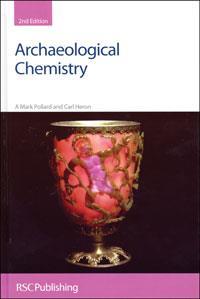Archaeological chemistry
Archaeological chemistry
A Mark Pollard and Carl Heron
Cambridge, UK: RSC Publishing 2008 | 456pp | ?39.95 (HB) ISBN 9780854042623
Reviewed by Howell G M Edwards

Mark Pollard and Carl Heron have set out to produce a text that will bring together an interdisciplinary readership in the fields of chemical conservation, restoration, archaeological excavation, historical provenancing, and chemical analysis. It is perhaps the latter area that will appeal most to chemists, but it must be appreciated that the application of chemical analytical procedures to artefacts and archaeological materials has several unique restraints which demand, in particular, minimal sampling, or preferably non-invasive and non-destructive analysis. These pose major challenges for analytical chemists due to the special nature of the specimens presented.
One of the first chemists to analyse ancient pigments was Sir Humphry Davy, who published his results from the analysis of wall paintings from Pompeii in the Proceedings of the Royal Society in 1815; this paper stands as the first example of the application of chemical analysis to ancient art and archaeology. Even then, Davy appreciated the fact that his analyses completely destroyed the valuable specimens presented to him. In the 1920s, a seminal study of English porcelains by Eccles and Rackham produced some very important analytical information but again at the expense of the sacrifice of whole items of chinaware, such as plates, cups and saucers. These analytical protocols would just not be acceptable today.
Many of these aspects are addressed in this book and it will provide a fascinating introduction to experienced analytical chemists interested in applications of their techniques in new areas. It will also be a source book for experienced archaeologists and conservators who are interested in information about the use of ancient materials and their degradation in the depositional environment using modern analytical techniques. This book is also highly recommended for students across a range of chemistry and archaeological science degree courses.












No comments yet